In this guide, we’ll show you how to paint a PC case in your own chosen color using spray paints, which are both affordable and easy to use. We’ll take you through the whole process of dismantling, masking, and then spray painting your PC case, as well as adding a protective layer of clear coat.
Whether your PC case is screwed or riveted together, we’ll cover all the information you need to make the process as pain-free as possible, while still resulting in a fantastic finish. If possible, summer is the best time of year to spray-paint your PC, as you’re more likely to get a better finish, and the paints will dry much faster than in winter. It’s also easier to get outside into well-ventilated spaces, and you don’t have to spend hours outside in freezing temperatures either.
1. Choose your colors
Your first step is to decide on the color or colors you’ll be spraying your case. You’ll need to buy enough paint to deal with whole panels of your case in a single session for the best finish.

2. Interior and/or exterior?
Just spraying the interior or exterior has its benefits. It will mean needing a lot less paint and you’ll be done in half the time. However, you’ll also need to mask the areas you don’t want to paint. An ATX case will need roughly two cans of primer, color and clear coats for the exterior and the same again for the interior.

3. Remove the rivets
You need to dismantle your case before you spray it. PC cases are usually held together with screws, rivets, or both. It’s easy to remove screws, but you’ll need to drill out rivets. Start with a 3mm drill bit and increase the bit in size until you drill the rivet out of the case. The holes are usually 3mm, 4mm, or 5mm wide.

4. Dismantle case
Strip down the case to its individual parts, or just the exterior panels if you’re only spraying those. Take photos of the case at each step, so you know which pieces go where.

5. Clean case sections
Cases will have fingerprints, stickers and other grime on them that can affect the paint finish, so you need to clean it first. Use warm water with a dash of washing-up detergent and a sponge, rinsing thoroughly after and allowing it to dry naturally.
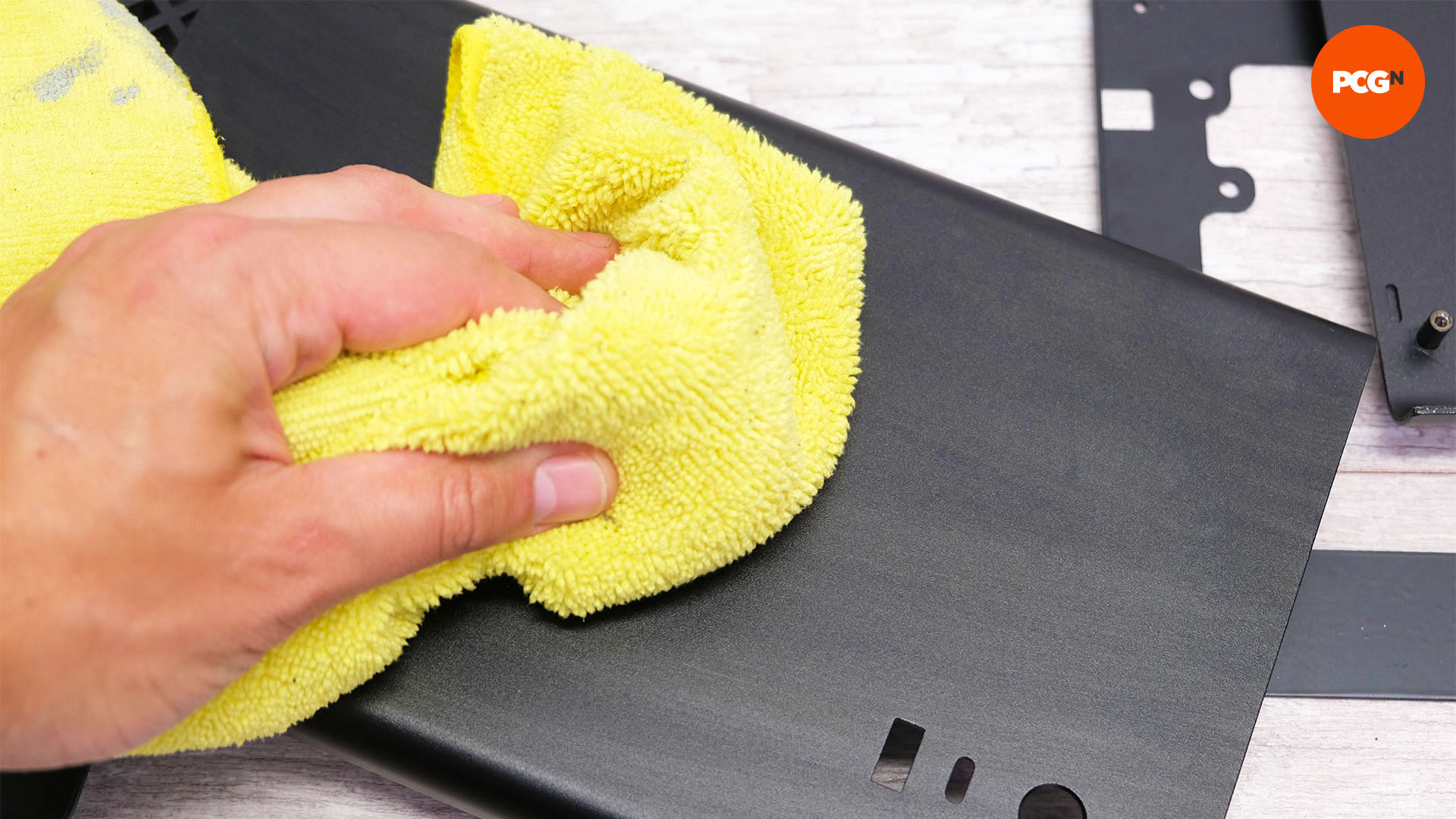
6. Remove ports, buttons, and filters
It’s essential to remove any case buttons, ports, and dust filters, as these parts can become clogged with paint and no longer function. They’re usually screwed in place and easy to remove.

7. Sand and fill
Deep scratches and dents are unlikely to be solved by filling them with primer, so it’s best to fill and sand them first. Use 3M glazing putty, along with a spatula or old flexible plastic card to smooth the putty into the scratches, then use 800-grit sandpaper to finish.

8. Use protective gloves
Protect your skin by wearing long clothes and protective gloves. These are essential not only to prevent skin reactions, but also to prevent you from transferring oils to the paint surfaces from your fingers.
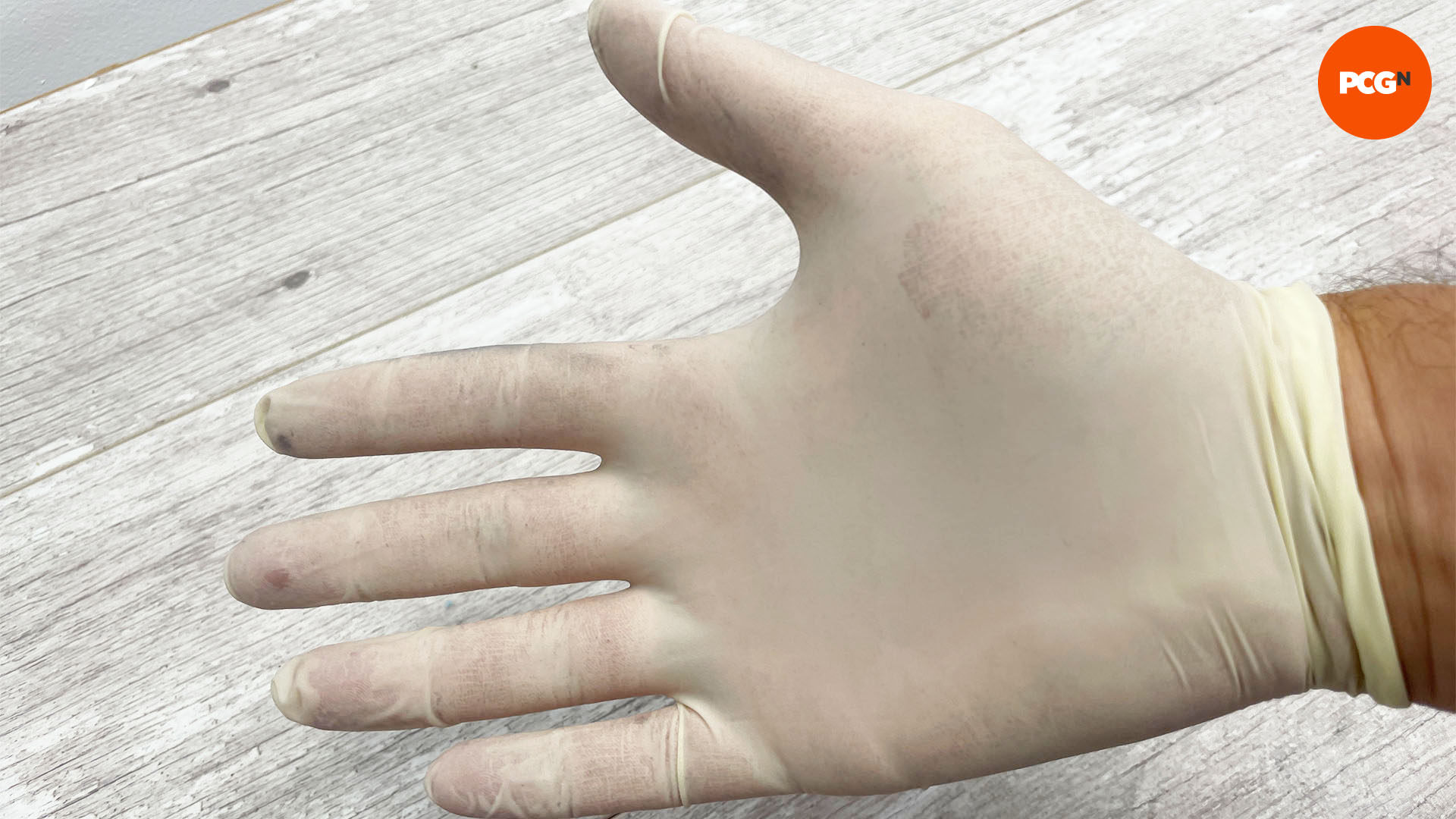
9. Use goggles
Goggles are essential, as the paint will get everywhere, including your eyes. Make sure the goggles seal around your eyes with no gaps.

10. Use a respirator face mask
It’s highly recommended to get a respirator face mask, so your mouth and nose are sealed away from the fumes. These cost less than £20 and are essential if you’re spraying in an enclosed space or dealing with 2K clear coat.

11. Create a safe spray area
A plastic greenhouse is an ideal place to spray your case, as it contains the spray paint and prevents insects from landing on surfaces, as well as allowing you to paint in the rain or sunshine. However, you’ll need to use the full complement of protective gear as mentioned above.

12. Consider using a spray trigger
Spraying a large case can be hard on your trigger finger, and a spray trigger can make this work more comfortable. They’re relatively cheap, but don’t work with all cans. For example, the Montana Gold cans we used here didn’t fit, but most others do.

13. Mask areas
It’s a good idea not to spray on areas that make contact with other areas, as this can cause the paint to stick, and for those sections to not sit together properly. Apply Frog tape to these areas, and any other sections you want to remain clear of paint.

14. Warm your spray cans
If you’re spraying in winter, it’s a good idea to warm the cans first, so the paint is closer to room temperature. You can leave them indoors for 12 hours, or place them in warm (but not hot) water for 20 minutes.

15. Use a heater
In winter, paint can take a long time to dry and is more at risk of running than in summer. A warm spray area can be hugely beneficial, so it’s worth warming the area with a heater between sprays. Never turn on the heater when there are strong fumes – allow the fumes to clear first.
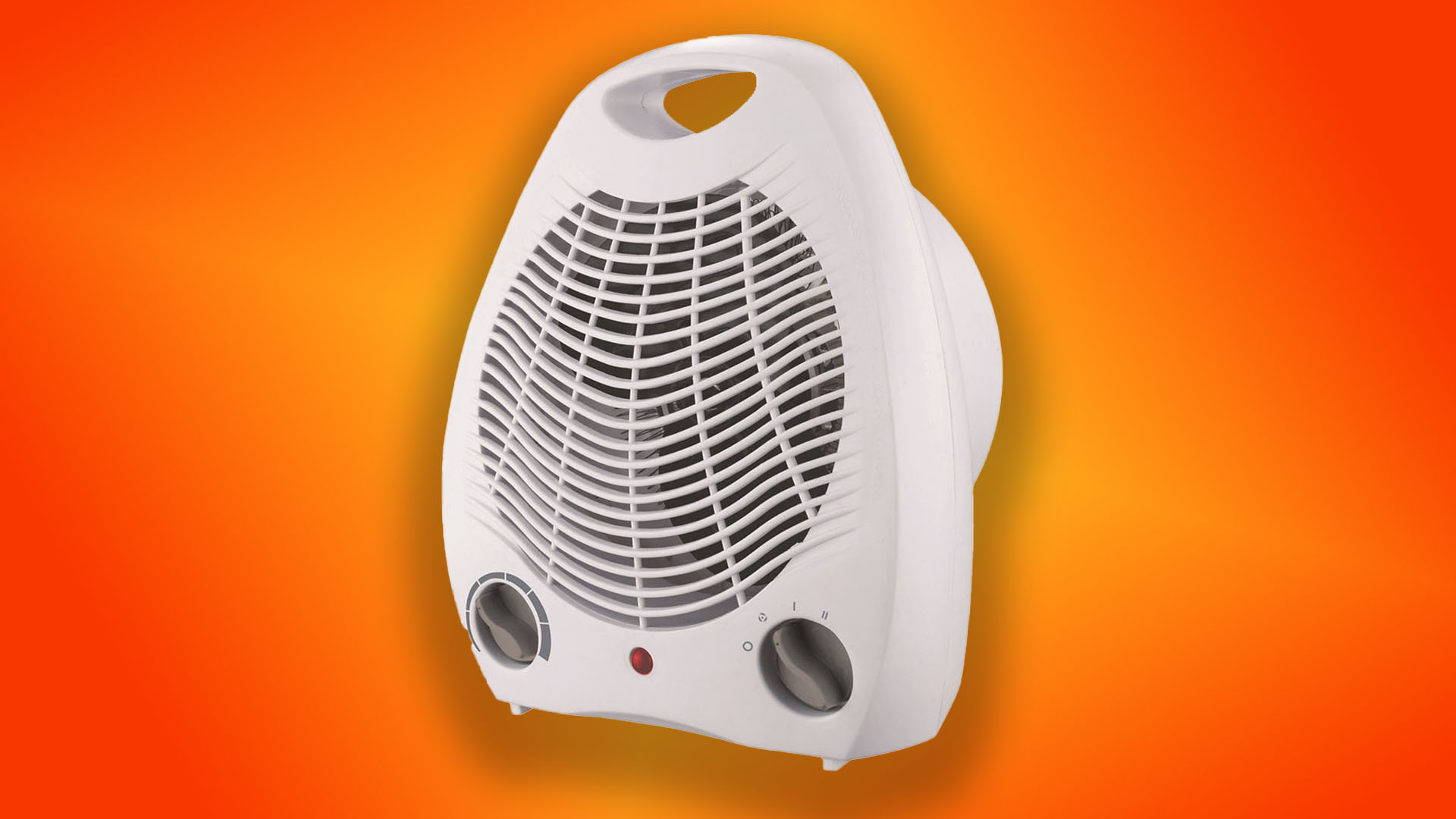
16. Use alternative spray caps
Cases generally demand wide spray patterns to deal with large areas, but most cans are equipped with relatively narrow spray nozzles. It’s best to invest in some alternative spray caps where possible, such as these Montana caps, which offer a variety of spray widths – the two widest ones are ideal for cases.

17. Suspend the case parts
One simple way to position your components for spraying is to suspend them, which is easy from inside a plastic greenhouse. You can use an electric cable to suspend them, as it’s sturdy, durable, and easy to tie. Bend it away from the case sections so the spray can reach every part of them.

18. Apply primer
Primer creates a smooth undercoat on which the color coat sits, as well as helping with adhesion. Apply light coats, moving the can about 30cm every second, left to right, from 30cm away. Leave each coat to dry for ten minutes, adding four coats in total or stopping when the base case color can’t be seen.
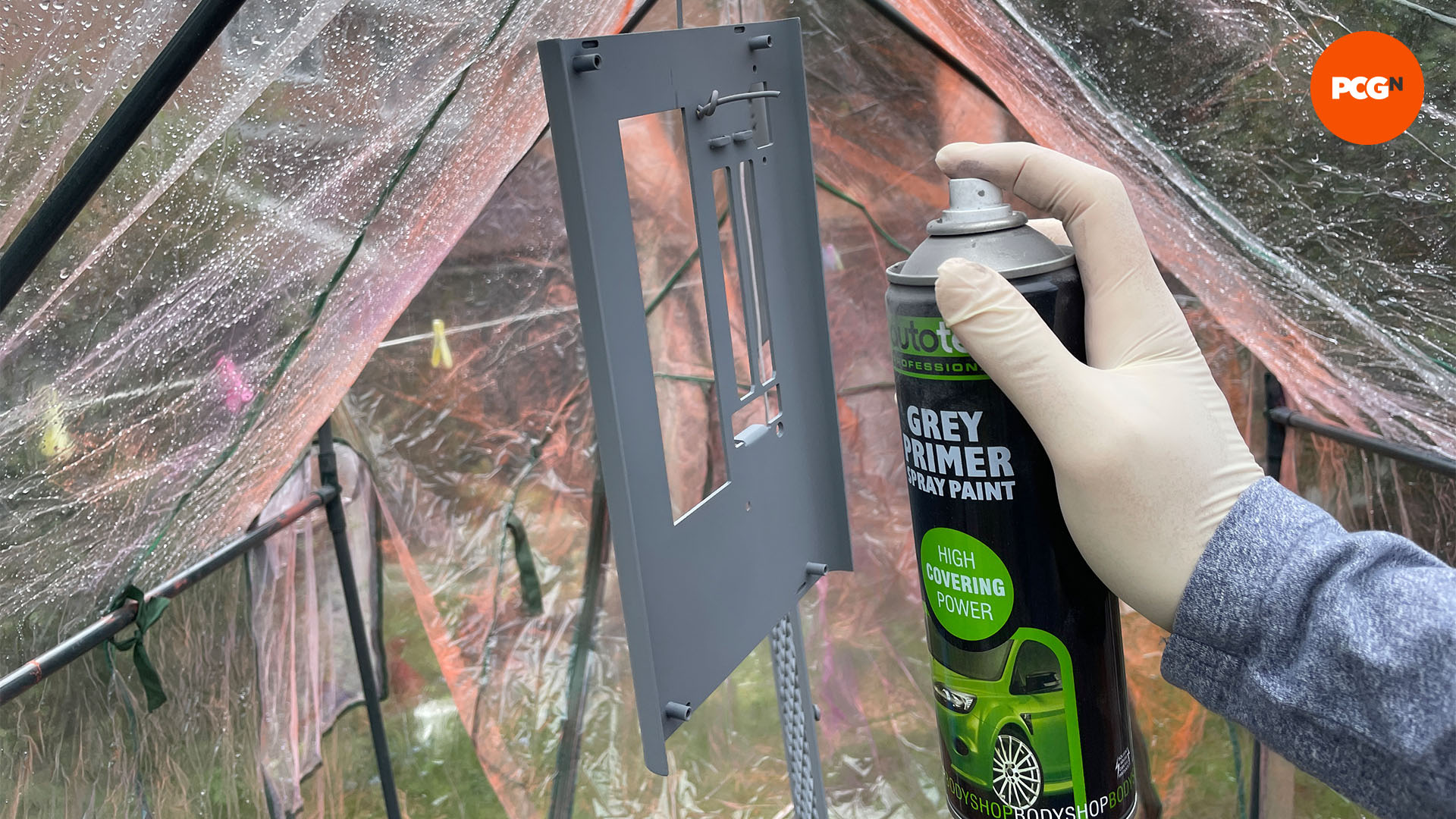
19. Sand the case as necessary
You want the surface to be as smooth as possible for the color coat, and sanding with 1,000-grit sandpaper can smooth the primer to a perfect finish. Do this after three or four primer coats, adding more as necessary. Keep pressure to a minimum and use your fingers to feel when the surface is silky-smooth.

20. Apply color coat
Ensure the color coat is properly mixed according to the can’s instructions, then spray in the same way as the primer, from 30cm away, moving swiftly over the panels. Build up layers with 15 minutes of drying time between each coat. Aim to apply four coats, or more until the primer layer is covered.

21. Remove masking
Once you’ve applied the color coat, remove the masking – if you do this after applying the clear coat, you can end up with the paint tearing. Pull on the masking tape gently and slowly peel it off.
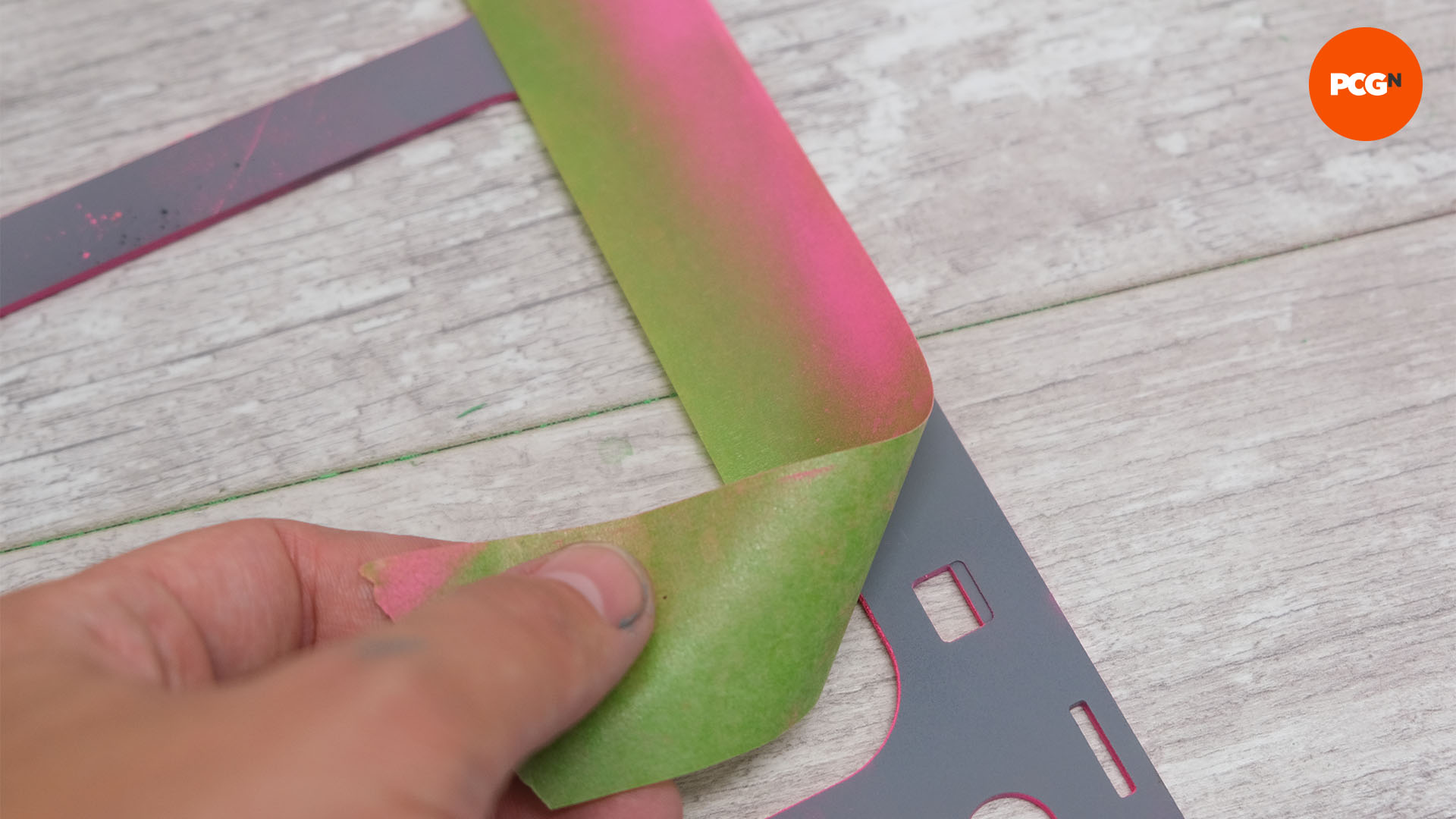
22. Consider using 2K clear coat
Standard clear coat is easy to apply, but it’s quite soft, even once it’s fully dried. You can consider using 2K clear coat, which dries harder, but is expensive and more hazardous, needing a proper respirator as well as skin and eye protection. It also needs to be mixed first, so be sure to follow the instructions.

23. Apply the clear coat
Clear coat needs to be applied more liberally than color coats, so it binds to the surface. Apply it from 30cm away, moving 20-30cm a second from left to right. It takes longer to dry than a color coat, with most clear coats needing 30-60 minutes between coats, especially on cooler days.

24. Polish clear coat
Leave the clear coat to dry for the specified time, which is usually a few days, or up to a week in some cases. You can now gently use automotive polish such as T-cut to buff the finish to a shine.

25. Re-rivet case
If you’ve drilled out rivets in your case, you’ll need to insert new ones. Measure the diameter of the holes and buy the appropriate-sized rivets, along with a rivet gun. Insert the rivets into the gun and squeeze the handles to secure the rivets in place.

26. Reassemble case
Once the panels are dry, polished, and up to your standards, reassemble the rest of the case with screws and/or rivets. Take care not to press too hard on the paint finish, especially if you’ve used standard clear coat.
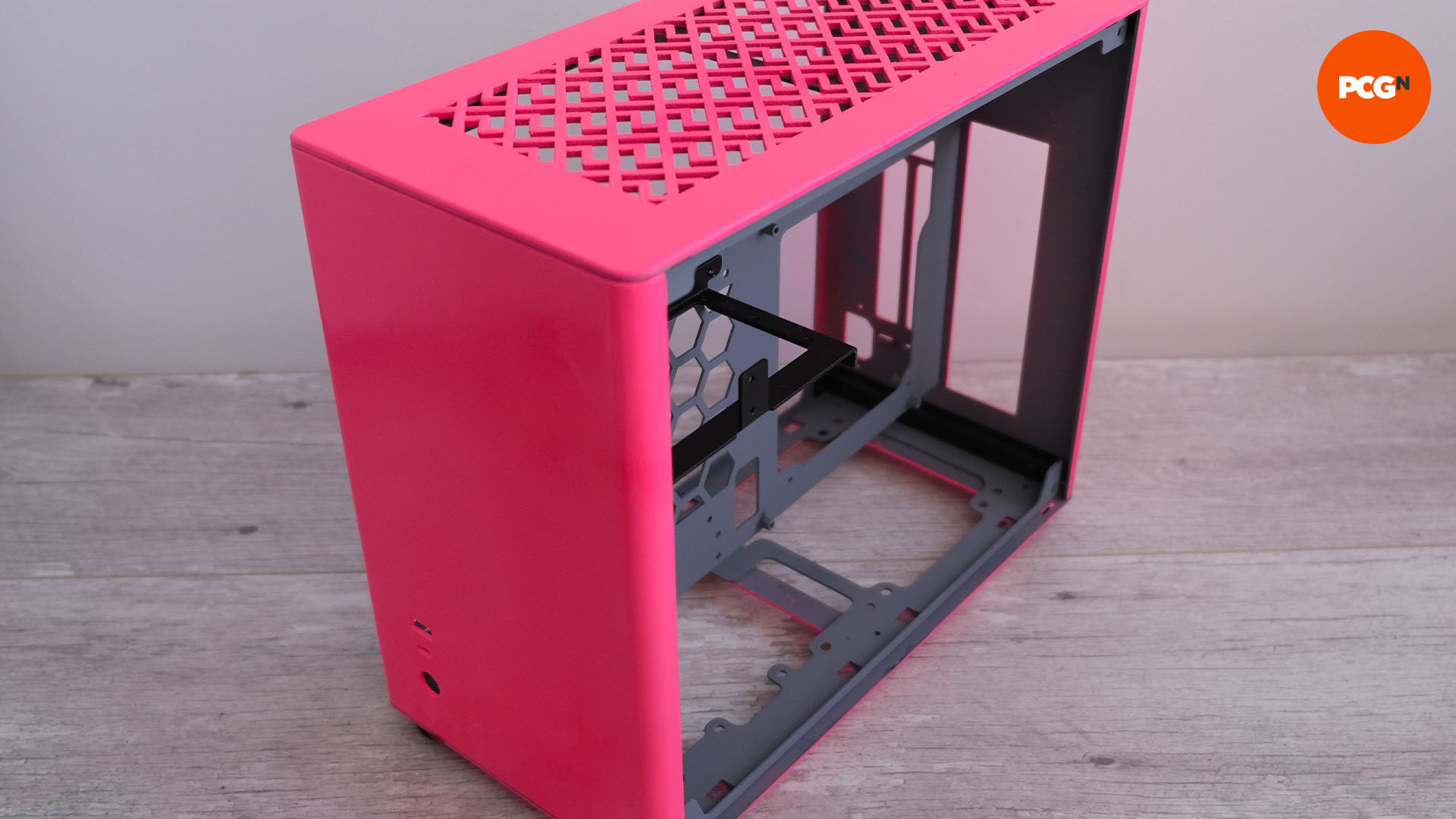
27. Help, I’ve messed up
If you’ve messed up, or if the paint hasn’t taken well to the surface, all is not lost. Use paint remover to dissolve what you’ve applied, wiping it clean with kitchen towel, then rinsing with washing-up liquid and an abrasive sponge before trying again.
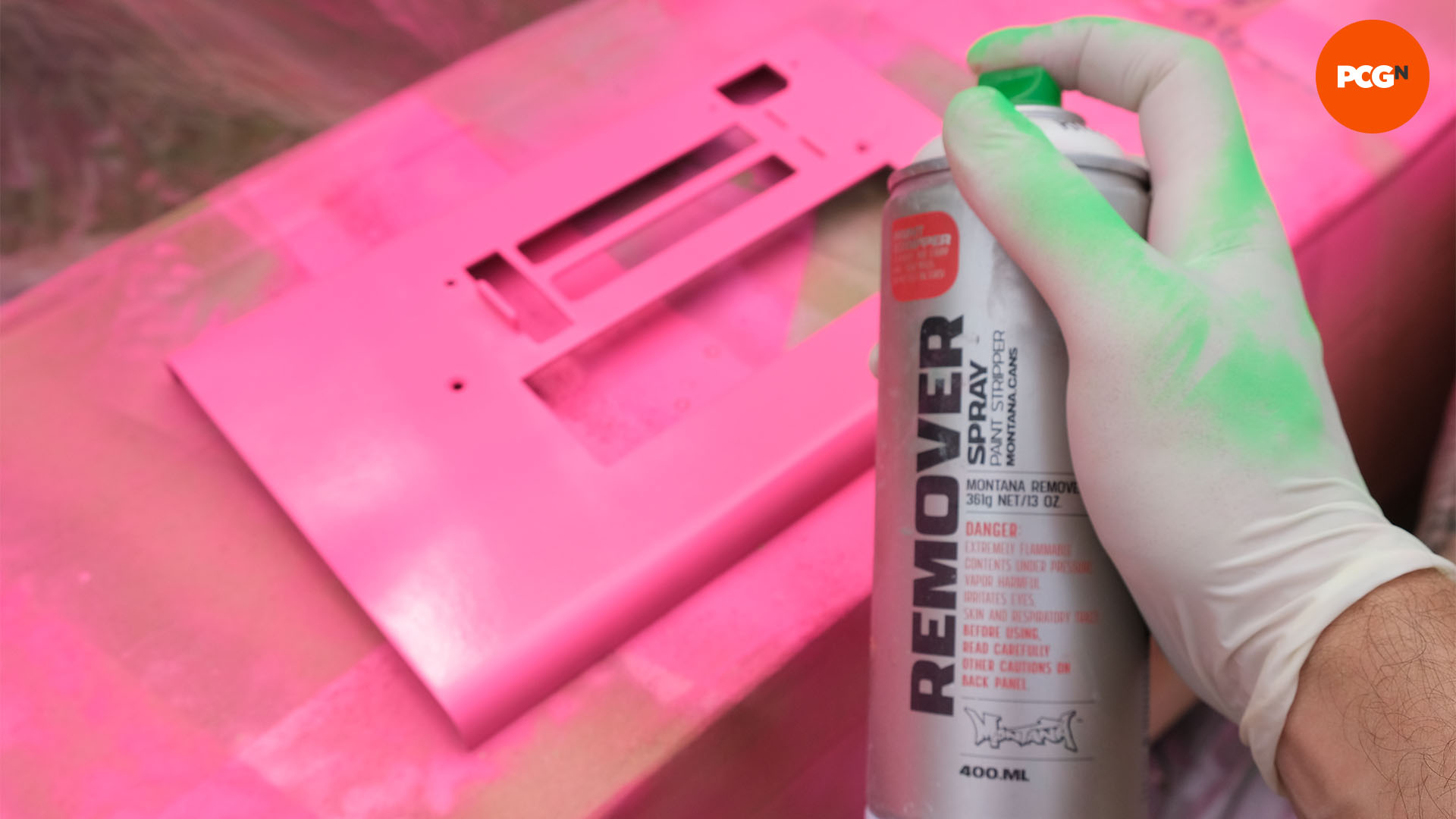
And that’s your painting job all done. All that’s left to do now is to install your PC components and enjoy looking lovingly at your PC in its new coat of color while admiring your craftsmanship.
For further PC case customization ideas, we also have a guide that shows you how to etch glass side panels. If you’re planning a new paint job as part of a new custom build, then you’ll also want to read our full guide on how to paint a PC motherboard, which covers every step of the process.
